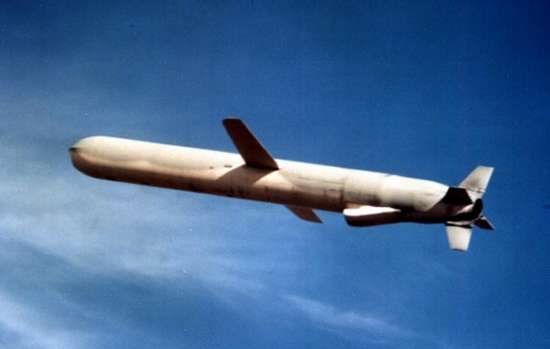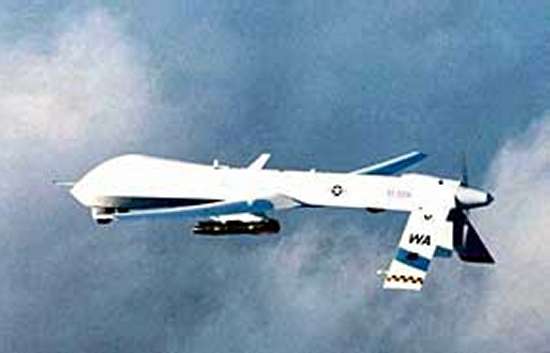|
||||||||||
|
|
||||||||||
|
||||||||||
|
|
||||||||||

However, a new wrinkle occurs when we introduce the concept of armed unmanned aerial vehicles (UAVs) or dedicated uninhabited combat aerial vehicles (UCAVs). While such vehicles weren't even on the drawing board back in 1987, the INF Treaty contained some rather vague language that outlawed launching warheads from "an unmanned, self-propelled vehicle that sustains flight through the use of aerodynamic lift over most of its flight path." If you think about it, this is exactly what the Tomahawk cruise missile is since it deploys wings and cruises like an airplane to targets hundreds of miles from the launch point. The treaty goes on to say that this ban is applicable to any vehicle capable of traveling between 310 miles (500 km) and 3,100 miles (5,000 km), exactly the range a UAV or UCAV would tend to operate over.
The legal ramifications of this treaty were first addressed in late 2000 and early 2001 when the US Air Force and Central Intelligence Agency decided to arm RQ-1 Predator reconnaissance drones with AGM-114 Hellfire missiles, a missile also carried by the AH-64 Apache and used to destroy armored vehicles. The Predator project encountered difficulties when the US State Department objected, fearing a violation of the INF Treaty. However, a compliance review board consisting of Defense and State officials finally concluded that further language defining the class of weapons to be banned as "a ground-launched cruise missile that is a weapon-delivery vehicle" was sufficiently specific so as to exclude any armed UAVs. Testing of armed Predators commenced in early 2001 and the aircraft has already seen active duty over Afghanistan. Nonetheless, the board did make it clear that such aircraft could potentially be classified as GLCMs in the future.

The next logical question is what is Russia's opinion on the subject? Since Russia is also eager to develop armed
unmanned aircraft of its own, they have raised no serious objections to the arming or Predator or the continued
development of the Air Force's X-45 experimental UCAV and the Navy's UCAV-N. In summary, since the INF Treaty
was never intended to outlaw armed UAVs and both signatories are interested in pursuing such aircraft, effectively
there is no "ban" on their use.
- answer by Jeff Scott, 23 December 2001
Read More Articles:


|
Aircraft | Design | Ask Us | Shop | Search |

|
|
| About Us | Contact Us | Copyright © 1997-2023 | |||
|
|
|||